Lecture Notes 2 PDF

| Title | Lecture Notes 2 |
|---|---|
| Course | World History to 1500 |
| Institution | Bridgewater State University |
| Pages | 52 |
| File Size | 626.3 KB |
| File Type | |
| Total Downloads | 36 |
| Total Views | 135 |
Summary
Lecture Notes for the second academic week in September. Professor Hanna. ...
Description
World History to 1500: Lecture Notes I.
Introduction
A.
First Peoples 1. Have occupied this planet for about 250,000 years, divided into three phases according to the kind of technology that was most widely practiced. 2. The first phase was the Paleolithic Age, covering about 95% of human history. These people settled every major landmass and constructed the first human societies. About 12,000 years ago came the first Agricultural Revolution, when the domestication of plants and animals became the primary ways of sustaining life. Finally, about 1750, the first Industrial Revolution occurred, with a vast increase of productivity, wealth and human control over nature. This gave rise to “modern” society. B. Most of human history has been involved with the so-called “Stone Age” people, specifically: II.
Paleolithic People A.
Lived in the so-called “Old Stone Age,” which ended about 12,000 years ago. Human life as we know it began in the Rift Valley of eastern and southern Africa. B. Paleo people were hunter-gatherers; they foraged for their food; thus they were migratory. They perhaps moved as much as 200 miles. They began their movement out of Africa and across the world between 100,000 and 60,000 years ago. C. The first humans probably reached North America via the 53-mile wide Bering Strait. Human migration was inhibited by the ice of the Pleistocene, which lasted from 2.5 million years ago up until about 12,000 years ago. D. Characteristics of Paleo people included: 1. They traveled in small groups of 20-50 people. They were mobile with not much surplus, mainly because they couldn’t have transported it. 2. They lived predominantly in natural shelters such as caves, canyons, etc. However, there were some hand made shelters constructed on wood, bone and tusks, etc. 3. They used fire. 4. There was no specialization of tasks but there were gender specific roles. Women gathered food (thus providing 70% of the diet), while the males hunted and fished. 5. Paleo was an egalitarian society with no social status or rank.
6. Some societal rules did evolve, including those on adultery, incest, territoriality and leadership. 7. Life span was about 35 years. E. They had active artistic and spiritual lives: 1. Practiced animism or totemism, believing that living things in the natural world (e.g., trees, rivers, etc.) has a spirit. There were many models of belief; some were monotheistic, others polytheistic. They did have rituals, which included burial rites, etc. These were conducted by shamans, who were thought to be able to communicate with the spirit world. Paleos often saw life as expressions of gods’ pleasure or displeasure with them. 2. Some evidence that they saw time as cyclical rather than linear. Thus they celebrated the phases of the moon, the cycles of the seasons as representing the cycle of birth-death-birth; endless regeneration. F. Paleo people did alter and shape their environment. For example, they may have sent some plants and animals to extinction and they changed the flora by burning off grasses, etc. that inhibited gathering food. Also, after some period of co-existence, the Neanderthals disappeared. III.
Neolithic People “New Stone Age,” also known as the “Agricultural Revolution.” A.
Global warming made more parts of the world hospitable to man. E.g., water levels rose, tundra became grassland, etc. B. The period was marked by: 1. Domestication – turning plants and animals to human use. Of the 200,000 known species of plants, only a few hundred were domesticated and only 14 species of large animals has been domesticated. 2. Intensification – getting more production from a smaller area. C. Because settled villages with larger populations made it impractical to move, humans were forced to become more technologically innovative in order to increase the food supply. This process was neither uniform nor easy and it developed in different ways over different times. D. Although life was more comfortable, it was not necessarily more healthy; people did not live longer: They became more vulnerable to disease, both those born by animals as well as by other humans. They were also more vulnerable to famine. E. Three areas in which development was parallel but different: 1. The Fertile Crescent – today’s Iraq, Syria, Israel and part of Turkey – was the world’s first agriculturally productive area. This region existed mainly between the Tigris and Euphrates rivers. An advanced society, they used bricks, had ceremonial buildings and burial rites; they used advanced tools such as an ax , sickles, etc.
2. East Africa – today’s Sudan (the Sahara did not exist). They raised cattle, donkeys, sheep and goats. Here domesticated animals preceded plants, everywhere else it was reversed. In Africa, domestication of plants was more geographically dispersed. 3. Americas – primarily in the Andean coastal region (Pacific side), Central America, the Mississippi River Valley. There was only one domesticated animal in the Americas: the llama. They lacked animal power, there was no grain (they did have squash and beans) so they relied on hunting, fishing more than other peoples. F. Pastoral societies were comprised of herders and nomads. They arose where farming was poor and people relied mostly on animals: sheep, goats, cattle and camels. 1. They were mobile; they moved constantly in search of grassland. (None in Americas). 2. There social structure was often based on kinship clans or tribes. 3. There was often conflict with farmers over water, grass, territory, etc. G. During this period political power was often exercised according to kinship rules, with elders acknowledged as leaders. Some places chose chiefs to rule beneficently. They often had both religious and secular roles. Chapter 2: The First Civilizations I.
Civilization was a global phenomenon, appearing in six locations in the several millennia after 3500 years ago. They were located: A. B. C.
II.
Sumeria in southern Mesopotamia. This area is known as the “cradle of civilization. Here was the earliest written language. Egypt and Nubia in northeast Africa along the Nile River. Cities were less prominent here than in Mesopotamia. Norte Chico along the central coast of Peru. Here were smaller cities with less economic specialization. They were more self-contained and had an economy based on maize.
Three other areas emerged later. They were: A.
B.
Indus and Saraswati river valleys of present-day Pakistan. Much larger area that any of the others. Elaborately planned cities, great ceremonial buildings, etc. Ecological stress wore out the location and the cities were abandoned about 1700 years ago. China dated to about 2200 years ago. Very different from the others and has
C.
III.
shown the most continuity over time. The Olmec along the coast of the Gulf of Mexico in present-day southern Mexico. Based on an agricultural economy of maize, beans and squash built elaborate cities. May have seen the first written language in the Americas.
These civilizations had certain factors in common. They were: A.
All were highly productive agricultural economies with advanced features such as irrigation, terracing, flood control, etc. They also utilized pottery and advanced tools. They had their roots in the Agricultural Revolution. Only an agricultural society could produce enough surplus to support the large populations of the cities. B. All emerged from earlier competing chiefdoms in which specialization and social ranking had already developed. C. Each had densely populated areas (cities)where the available agricultural land was limited (usually be geographical features) and so humans were forced to improvise and innovate. A highly organized state was advantageous here. IV.
The Erosion of Equality A.
Also present in the first civilizations was the erosion of the equality that had once existed in both agricultural and pastoral societies. Increased specialization brought vast inequalities in wealth, status and power. 1. Free commoners represented the greatest percentage of the population: artisans of every kind, lower level government officials, soldiers, police, servants and, most numerous of all, small farmers. 2. Also present in these societies was slavery, which has existed almost from the beginning of civilization. Unlike modern times, for example the American South, early slaves were not agricultural laborers, it was not necessarily hereditary, and it wasn’t associated with race. B. Also developing with the first civilizations was strong patriarchal control. 1. In farm-based societies, improved tools required more physical strength. 2. Also, as the population grew quickly, women spent more time pregnant and otherwise involved in child-care. 3. In societies that were not plow-based, patriarchy grew because of the growth of specialized and prestigious jobs, which were almost entirely taken by men. 4. Finally, as states grew in size and complexity, warfare became more common, and defense was almost exclusively the realm of males. C. In practice, patriarchy was often codified into law (see Hammurabi). Even
though these laws required complete submission to men, they often afforded a measure of legal protection to women. A double standard existed in regard to sexual mores throughout the early civilizations. V.
The Rise of States A.
The complexity of life in cities covering large areas required centralization of authority to coordinate and regulate daily life. Inevitable conflicts had to adjudicated and states did this. B. States favored the elites in that government maintains the status quo; they also had the power to force compliance with tax laws as well as to recruit labor for public works projects (e.g., pyramids). C. Many states—Egypt, for example—invested their leaders with divine qualities. Some were thought of as descendants of God on earth. Some were even thought to have supernatural powers. D. Also, these states developed written language early, and that helped solidify state power: Elites were literate; able to account for taxation; also laws and edicts were written. E. The lavish lifestyle of the royals reinforced their status, as did the ceremonies they invented. VI.
A Comparison of Egypt vs. Mesopotamia: The Role of Geography and Climate A.
Several factors made Egypt more successful: 1. The Nile (4,150 miles long) flooded annually and on schedule. Tigris and Euphrates flooded but not on schedule, therefore Egypt had a stable and successful agricultural economy. Mesopotamia, not so much. 2. Egypt was surrounded by natural barriers (rivers, deserts, mountains, etc.) that discouraged invaders. Mesopotamia, conversely, was under constant threat. 3. Egypt was a unified state with good opportunity for trade. Mesopotamia was comprised of small city-states that were constantly at war with each other. 4. Both had extensive trading networks which also spread their culture, and they in turn were influenced by those in areas where they traveled. 5. Geography and climate allowed Egyptians to have a cheerful, optimistic on life and the afterlife (note the Book of the Dead). Mesopotamia, on the other hand, saw life and the afterlife as threatening and unpredictable. B. In neither society did the people feel any nationalism or national identity. Instead, they identified by region, clan or occupation.
Chapter 3: State and Empire in Eurasia/North Africa Part I: The Persians and the Greeks I.
The Persian Empire A. This was the largest and most impressive empire. It was located on the Iranian plateau just north of the Persian Gulf. 1. It was characterized by broad territorial conquests and stretched to India. 2. Persia was one unified nation of 23 provinces with a diverse population of 35 million people. B. Persia was ruled by a ultra-strong, physically distant king said to rule with the authority of the Persian god. 1. Dissent was crushed quickly and ruthlessly. 2. Persian governor, called satraps, ruled the 23 provinces, but lower level officers were locals. C. Non-Persian cultural traditions were respected and absorbed into Persian
life. D. A sophisticated infrastructure supported great imperial centers such as Persepolis and Susa.
II.
The Greeks A.
Classical Greece occupied a peninsula divided by mountains and canyons. Instead of a unified empire like Persia, it was comprised of several small, independent city-states. Total population was 2-3 million. 1. Without an oppressive monarchy, most Greek city-states allowed varying degrees of public participation in government. 2. Each city-state was independent and often in conflict with neighbors, but all Greeks spoke a common language and worshiped the same gods. The largest city-states were Athens, Sparta, Thebes and Corinth. B. The Greeks also spread out but by foreign settlement rather than conquest. Their dispersion was fueled by economics: a better life for some segments of the population. C. The most distinctive characteristic of the Greek experience was their idea of “citizenship,” or popular participation in government. 1. Originally, only the wealthy could vote of hold public office. This gradually spread downward to middle and lower class men. This was because more and more men were serving in the army and political rights were extended to
them. Excluded were slaves, women and foreigners. 2. In some city-states tyrants, strong, wise leaders, ruled and looked out for the poorer people. D. Athens was the best example of full Greek democracy. The leadership of Solon was critical to this. Here even the poorest could participate and hold office, and all (male) citizens could speak before the Assembly. 1. Athenian democracy was direct, not representative. 2. Even here, more than half of the population—women, slaves and foreigners—were shut out. III.
Greco-Persian Wars A.
Initiated when Athens supported the rebellion of Greek settlements in Ionia against the Persians who dominated them. 1. In 10 years the Persians launched 2 major military operations to punish the Greeks, especially the Athenians. 2. Against heavy odds the Greeks won, most notably at the Battle of Marathon during the first campaign. 3. Victory in the Persian Wars was a major event in Greek history because it led to a further inclusion of non-wealthy Greeks in civic life. The number of hoplites required for the Greek army brought new political rights to these men postwar. B. The 50 years after the Persian Wars brought the high point of Athenian democracy as well as the Golden Age of Greek culture, bringing to the forefront figures such as Socrates, Sophocles and Pericles. IV.
The Peloponnesian War A.
Mounting friction among several city-states, most notably Sparta, resulted from Athens attempts to imperialize and dominate the rest during and after the wars with Persia. 1. The Spartans led an alliance of city-states against Athens from 431-404 B.C. Athens was defeated but the toll on the Greeks was extremely high. The resulting exhaustion and divisiveness of the wars left Greece open to foreign conquest. 2. Nevertheless, the spread of Greek culture was just beginning. V.
Alexander and the Hellenistic Era A.
Macedonia lay at the northern edge of the Greek world, and led by Philip II, the Macedonians overran Greece by 338 B.C.E. This brought
about the unification of Greece and the loss of independence of the citystates. B. The Macedonian takeover also brought an epic clash between Greece and its traditional enemy, Persia. This was led by Philip’s son Alexander over a 10-year campaign, from 333-323 B.C.E. 1. Alexander the Great has become a legendary figure. Leading one of the greatest military expeditions in history, he created a Greek empire that extended from Egypt in the west to Afghanistan and India in the east. He accomplished this while still in his twenties. 2. The Persian Empire was defeated and its capital Persepolis was looted and burned. 3. Alexander died in 323 B.C.E. having never returned home. Soon, the empire was divided into three kingdoms, each ruled by a Macedonian general.
Part II: Comparing Empires: Roman and Chinese I.
Rome A.
Began as an impoverished settlement on the west coast of central Italy about 800 years B.C.E. It eventually—slowly—grew to enormous size and influence. B. Rome was originally ruled by a king but the wealthy, called patricians, overthrew the monarchy and established a republic ruled by the wealthy. 1. Executive power resided in the hands of two consuls who were advised by the patrician Senate. 2. Agitation by the poorer classes, called plebeians, brought important changes. For example, a written law code was established was established to safeguard plebeian rights; a system of public assemblies allowed the lower classes an opportunity to shape laws; and a new office of tribune, who represented plebeians, was created to protect their rights. C. Immensely proud of their system, the Romans began to expand, first by taking over weaker city-states on the peninsula, and then outward. 1. The Punic Wars with the North African city of Carthage, brought victory and control of the western Mediterranean. 2. Later expansion eastward brought them control of Greece, Egypt and old Mesopotamia. 3. Eventually they came to control Spain, France and Britain and by the second century B.C.E. the Roman Empire was at its height.
II.
China A.
China, one of the First Civilizations, had once been unified and powerful but over time had fallen into disunion and warring factions. Rulers in several of these tried to exert power over the others, but the result was chaos. B. Things changed when Qin Shihuangdi organized a campaign to unify China. 1. In his own state of Qin, he had gained autonomy by subduing the rich, growing the army and providing it with the latest weapons, and finally, creating a bureaucracy loyal to him. 2. Shihuangdi also developed a political philosophy called Legalism, which spelled out laws and brutal punishments for breaking them. 3. In only 10 years Shihuangdi waged a military campaign that brought about the unification of China under his authority. He became the “First Emperor.” C. Shihuangdi led China on conquests that included northern Vietnam, Korea, and the nomadic people who inhabited the northwestern provinces. Compared to Roman empire building, this process was shorter and just as brutal. 1. Shihuangdi embarked on a great public works program which included construction of the Great Wall of China. 2. He also standardized the written form of the Chinese language. 3. The brutality of Shihuangdi’s rule brought internal problems and his dynasty collapsed in 206 B.C.E. D. Shihuangdi’s regime was followed by the Han Dynasty (206 B.C.E. – 220 C.E.) 1. Kept the unifying features of the earlier ruler but eased the harshness. 2. Adopted Confucianism. 3. Set in motion the imperial state and modern China as we know it. III.
Similarities between the Roman and Chinese Empires A. Both invested heavily in public works projects—roads, bridges, aqueducts, etc.—that unified their areas both commercially and militarily. B. Both invoked supernatural powers for their leaders. Romans believed that their dead emperors were gods (Christians disagreed), while in China the emperor was known as the Son of Heaven. Good moral practice was spelled out in the works of Confucius and this became the official language of the country. C. Both absorbed a foreign religious tradition: Christianity in Rome and Buddhism in China. Both spread slowly.
IV.
Differences A. Romans always remained a minority within their own empire. While they
granted citizenship to many of the peoples they conquered, this brought legal, not cultural, assimilation. The Chinese actively absorbed, both culturally and politically, those in their empire. Those became Chinese in every sense of the word. B. Their languag...
Similar Free PDFs

Lecture notes, lecture 2
- 3 Pages

2 - Lecture notes 2
- 5 Pages

Lecture notes, lecture Chapter 2
- 11 Pages
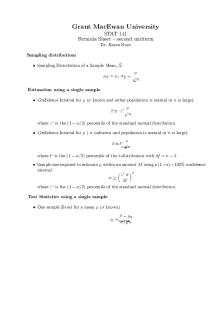
Lecture notes, lecture formula 2
- 1 Pages

2 Biodiversity - Lecture notes 2
- 33 Pages

Chapter 2 - Lecture notes 2
- 30 Pages
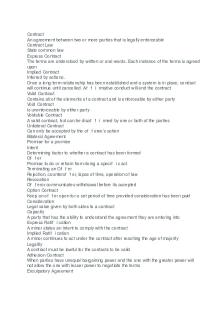
Blaw 2 - Lecture notes 2
- 4 Pages

Chapter 2 - Lecture notes 2
- 4 Pages
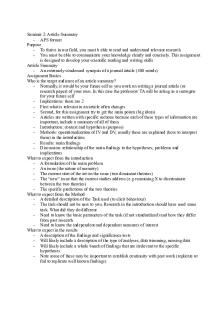
Seminar 2 - Lecture notes 2
- 2 Pages
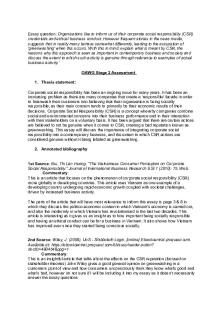
Stage 2 - Lecture notes 2
- 3 Pages
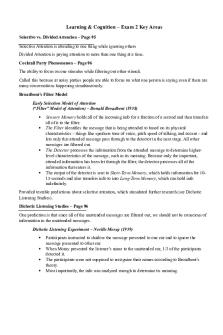
Exam 2 - Lecture notes 2
- 5 Pages

Lectia 2 - Lecture notes 2
- 3 Pages
Popular Institutions
- Tinajero National High School - Annex
- Politeknik Caltex Riau
- Yokohama City University
- SGT University
- University of Al-Qadisiyah
- Divine Word College of Vigan
- Techniek College Rotterdam
- Universidade de Santiago
- Universiti Teknologi MARA Cawangan Johor Kampus Pasir Gudang
- Poltekkes Kemenkes Yogyakarta
- Baguio City National High School
- Colegio san marcos
- preparatoria uno
- Centro de Bachillerato Tecnológico Industrial y de Servicios No. 107
- Dalian Maritime University
- Quang Trung Secondary School
- Colegio Tecnológico en Informática
- Corporación Regional de Educación Superior
- Grupo CEDVA
- Dar Al Uloom University
- Centro de Estudios Preuniversitarios de la Universidad Nacional de Ingeniería
- 上智大学
- Aakash International School, Nuna Majara
- San Felipe Neri Catholic School
- Kang Chiao International School - New Taipei City
- Misamis Occidental National High School
- Institución Educativa Escuela Normal Juan Ladrilleros
- Kolehiyo ng Pantukan
- Batanes State College
- Instituto Continental
- Sekolah Menengah Kejuruan Kesehatan Kaltara (Tarakan)
- Colegio de La Inmaculada Concepcion - Cebu



